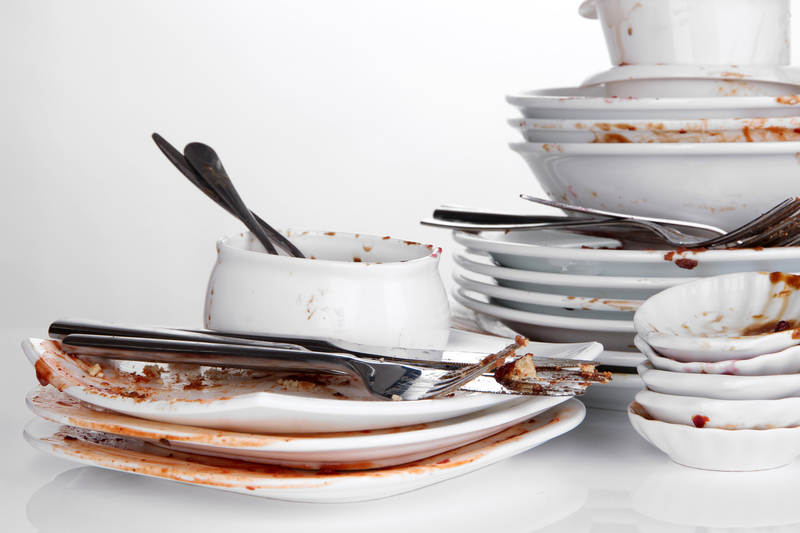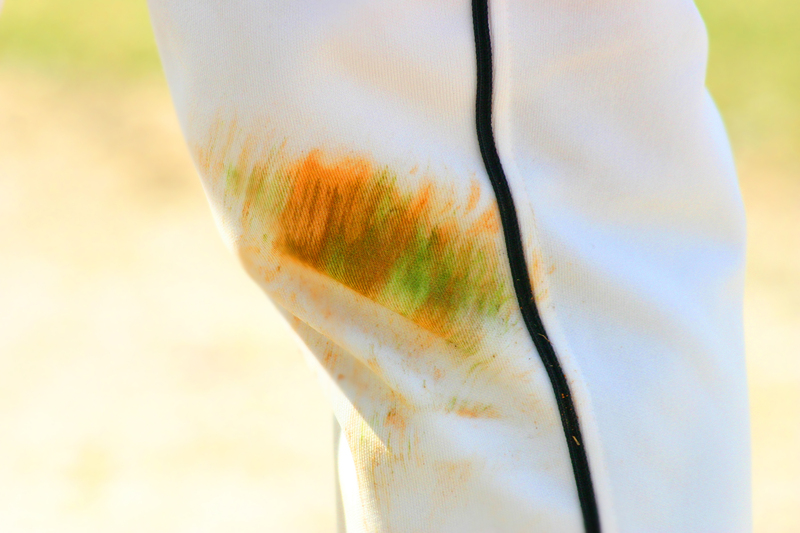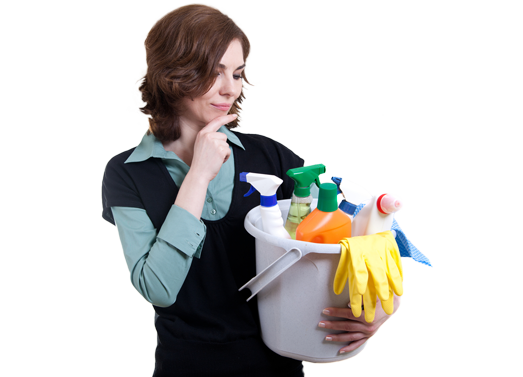A Tenant's Guide to End of Tenancy House Cleaning
Posted on 20/06/2025
A Tenant's Guide to End of Tenancy House Cleaning
Moving out of a rental property can be a hectic process. One of the most important tasks on every tenant's checklist is ensuring the property is clean and ready for its next inhabitants. Inadequate cleaning is one of the main reasons for deposit deductions, making end of tenancy cleaning a critical step for tenants who wish to receive their full deposit back.
This comprehensive guide will walk you through everything you need to know about end of tenancy house cleaning--from understanding your responsibilities as a tenant to practical cleaning tips and a step-by-step checklist.
What is End of Tenancy House Cleaning?
End of tenancy house cleaning refers to the deep cleaning of a rented property before moving out. It's a type of cleaning that goes beyond regular tidying, focusing on every corner of the apartment or house to ensure it meets the landlord or letting agent's standards.
- Purpose: To restore the property to the condition it was in when you moved in, as documented in the inventory report.
- Deposit Return: Ensuring the property is clean can help you get your full security deposit back.
- Obligation: Most tenancy agreements include a clause that requires the tenant to leave the property clean and tidy.

Why is End of Tenancy Cleaning Important for Tenants?
End of lease cleaning is crucial for several reasons, including fulfilling your contractual obligations, maintaining a good relationship with your landlord or agency, and securing your deposit.
Deposit Return
One of the most significant reasons tenants carry out thorough cleaning before moving out is to reclaim their deposit. Landlords often withhold part or all of the deposit to cover the costs of professional cleaning if the property is left in an unsatisfactory state.
Rental Reference
Leaving a clean home can help you attain a positive reference from your landlord, which may be beneficial for future rentals.
Meeting Landlord Expectations
Most rental agreements specify the requirement for the tenant to return the property in a clean state, commonly referred to as 'the same condition as at the start of the tenancy.' Understand your legal obligations by checking your tenancy contract.
Should You Choose Professional End of Tenancy Cleaning or DIY?
You have two options when it comes to end of tenancy house cleaning: hire a professional cleaning company or take the DIY approach. Let's weigh the pros and cons of each method:
Professional Cleaning Services
- Guarantee: Many companies guarantee their cleaning, offering a re-clean if you or your landlord are unsatisfied.
- Save Time: Professionals are quick and efficient, freeing you to focus on the move itself.
- Expertise: Trained cleaners know how to tackle tough stains and commonly overlooked areas.
- Cost: The main drawback is the expense, which can range from ?100 to ?400 or more depending on the size of the property.
DIY End of Tenancy Cleaning
- Cost-effective: Saves you money, especially if you have the necessary cleaning supplies.
- Personal Touch: You know the property best and can ensure every area matches your expectations.
- Time-consuming: Deep cleaning the entire property can take several hours--or even days.
- Result: Less likely to receive a guarantee; thoroughness is essential to avoid disputes.
What Should Be Cleaned? End of Tenancy Cleaning Checklist
Whether you opt for professional services or choose the DIY route, following an end of tenancy house cleaning checklist will help ensure nothing is missed. Here's a room-by-room guide:
General Areas
- Remove cobwebs from ceilings, walls, and corners.
- Dust and clean all surfaces, including skirting boards, window sills, and shelves.
- Clean doors, handles, and frames.
- Wipe light switches and sockets.
- Vacuum and mop floors; clean carpets if necessary.
- Wash windows inside (and outside if easily accessible).
- Clean radiators and any ventilation grills.
Kitchen
- All kitchen cupboards and drawers--inside and out.
- Worktops and splashbacks.
- Sink, taps and plug holes (descale and remove stains).
- Oven, stove and extractor fans (including filter if washable).
- Fridge and freezer (defrost and remove all food).
- Microwave, dishwasher and washing machine (clean seals and trays).
- Bins emptied and cleaned.
Bathrooms
- Toilets, baths, showers and sinks (descale, clean and disinfect).
- Mirrors and tiles cleaned and polished.
- Check and clean extractor fans.
- Replace toilet paper and check for any leaks.
- Clean all bathroom cabinets and surfaces.
Bedrooms
- All furniture dusted and polished.
- Vacuum carpets, under the bed and behind furniture.
- Clean inside wardrobes and drawers.
- Check for and remove any cobwebs.
Living Room & Other Common Areas
- Deep clean sofas and chairs (vacuum or use upholstery cleaner).
- Polish tables and surfaces.
- Clean TV stands, fireplaces, and other fixtures.
- Shampoo carpets if necessary.
Outdoor Spaces (If Applicable)
- Mow grass and tidy the garden.
- Sweep patios and driveways.
- Remove rubbish and debris from sheds or storage areas.
- Wipe down outdoor furniture.
Tips for a Successful End of Tenancy Clean
Follow these house cleaning tips for end of lease to maximise your chances of reclaiming your deposit:
- Start Early: Don't wait until the last minute. Begin cleaning as soon as you start packing.
- Read the Inventory Report: Compare the property's current condition against the move-in inventory for a clear cleaning benchmark.
- Gather Supplies: Stock up on cleaning products--multi-surface cleaners, limescale remover, oven cleaner, gloves, dusters, sponges, and microfiber cloths.
- Work Room by Room: Focus on one area at a time to keep your cleaning organized and thorough.
- Pay Attention to Detail: Small missed spots can make a big difference to a landlord's impression, so check tricky areas like underneath appliances, behind radiators, or window frames.
Common Mistakes Tenants Make with End of Tenancy Cleaning
- Neglecting Appliances: Ovens and fridges are often forgotten but heavily inspected during check-outs.
- Forgetting Light Fixtures and Switches: Dust and fingerprints can easily accumulate here.
- Not Defrosting the Freezer: This can cause leaks or leave a mess for the next tenant.
- Skipping Professional Carpet Cleaning (If Required): Some agreements stipulate this--be sure to check!
- Ignoring Exterior Areas: Balconies, gardens, and sheds must be left tidy.
What if the Landlord Isn't Happy?
Even after meticulous cleaning, some landlords may deem the cleaning insufficient. If this happens:
- Request Specific Feedback: Ask for a detailed list of unsatisfactory areas.
- Offer to Re-clean: If feasible, return to the property to address issues.
- Negotiate: Discuss and agree on a fair deduction if a specific cleaning task is required.
- Dispute Resolution: If you feel the deduction is unfair, escalate the dispute to your tenancy deposit scheme for formal resolution.
How to Choose a Professional End of Tenancy Cleaning Service
If you opt for professional end of lease cleaning, consider these factors:
- Reviews and Recommendations: Check customer feedback and ask friends for trusted companies.
- Price Quotes: Request detailed quotes based on your property's size and any unique requirements.
- Checklist: Ensure the service's cleaning list matches your landlord's expectations.
- Guarantees: Confirm if the company guarantees their work and offers a free re-clean if necessary.
- Insurance: Check that the company has appropriate insurance to cover any accidental damage.
Special End of Tenancy Cleaning Situations
Certain scenarios may demand more attention, such as:
- Pets on Premises: Extra effort is needed to eliminate odors, stains, and pet hair.
- Smoking Indoors: Removing smoke stains and odors may require deep cleaning.
- Mould or Damp: Address and clean affected areas, and inform your landlord.
- Furnished Properties: All furniture should be cleaned and checked for stains.

End of Tenancy Cleaning FAQs
Can I be charged for professional cleaning even if I clean myself?
Landlords can only require the property to be left in the same cleanliness standard as when you moved in; they can't force you to pay for professional cleaning unless you agreed to it in your tenancy contract.
How long does end of tenancy cleaning take?
This depends on the size and cleanliness of the property. A typical two-bedroom flat can take between 6 and 8 hours for a thorough DIY clean.
Do I need to clean windows from the outside?
It's a good idea if accessible; check your tenancy agreement for specific requirements.
Should I keep evidence of my cleaning?
Absolutely! Take dated photos of each room after cleaning. Keep receipts for any professional cleaning services utilized.
Summary and Final Thoughts
End of tenancy house cleaning is essential to recovering your deposit and leaving on good terms. Whether you handle the cleaning yourself or hire professionals, attention to detail and thoroughness are key. Use a checklist, tackle one room at a time, and always check your lease agreement for specific obligations. With careful planning and hard work, you can achieve a spotless property and enjoy a stress-free move.
Looking for more moving advice? Check out our other guides on packing, organizing, and securing your next rental home to ensure a smooth transition.




